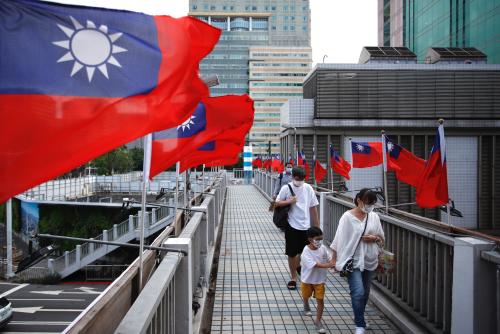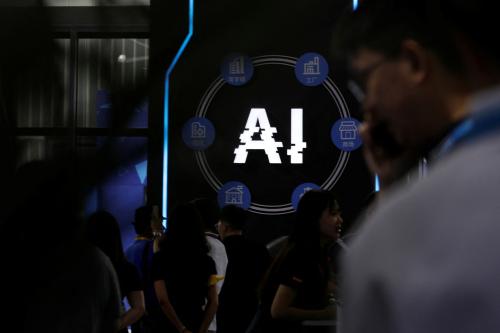Tanvi Madan testifies before the House Permanent Select Committee on Intelligence on U.S.-China relations and its impact on national security and intelligence in a post-COVID world. Read Madan’s introductory statement below, download the full testimony, or watch the live hearing.
Chairman Schiff, and distinguished members of the Committee, thank you for the invitation to speak at this hearing on U.S.-China Relations and its Impact on National Security and Intelligence in a Post-COVID World.
Even as the United States and India have engaged with China, over the last two decades their shared concerns about a rising China’s behavior have been a key driver of a closer U.S.-India partnership.
Over the last few months, there have been two key developments that have increased those concerns in New Delhi. (1) attempts by the People’s Liberation Army since early May to unilaterally change the status quo along the Line of Actual Control, the de facto boundary between the two countries, which led to the first fatal clash in 45 years between the two militaries; and (2) the coronavirus pandemic. Both these developments have had—and will continue to have—an impact on Indian views and approaches toward China, the United States, and the international order.
When they met in October 2019, Chinese leader Xi Jinping and Indian prime minister Narendra Modi sought to stress Sino-Indian cooperation. However, the pandemic and the boundary crisis have demonstrated that despite Delhi and Beijing’s efforts to engage over the last few decades, the China-India relationship remains a fundamentally and increasingly competitive one that can even spillover into conflict.
Are the boundary crisis and pandemic linked? While there continues to be a debate about the motivations for the PLA’s initial moves, COVID-19 might have had an impact at both the strategic and operational levels. At the strategic level, the boundary crisis is being seen as part of a pattern of China’s assertiveness on a number of fronts. Experts are divided on whether this assertiveness stems from either
- Xi Jinping wanting to show strength, because of concerns about domestic and international criticism of his regime’s handling of the pandemic, or
- Assertiveness stemming from Beijing’s desire to take advantage of other countries, including the U.S., being on the backfoot or distracted due to the coronavirus.
The pandemic also seems to have had an impact at the operational level. The PLA is thought to have redeployed troops from its annual springtime military exercise to undertake its initial moves to change the status quo at the boundary. India had postponed its similar exercise due to the pandemic, and might not have had a presence in matching strength on its side of the boundary to respond initially.
The boundary crisis and the pandemic have reinforced and accelerated concerns in India about China’s lack of transparency, its uncertain commitment to the rules-based order, as well as its growing influence in the Indo-Pacific and in international institutions. They have hardened official views of China in India, with the government signaling that the boundary crisis will have a “serious impact” on the broader relationship, particularly if the status quo ante is not restored speedily.
During the course of the pandemic and the boundary crisis, New Delhi has already imposed restrictions or additional scrutiny on Chinese economic and technology interests. Within the broader strategic community, there is a near consensus that ties with Beijing need to be reassessed. And public perceptions have deteriorated considerably.
At the same time, the boundary crisis and the pandemic have led to calls for India to maintain and even deepen its partnership with the U.S, and for Washington to play a more sustained and robust role in ensuring a rule-based order prevails. There will also likely be an increased Indian willingness to work with the U.S., as well as American allies like Australia and Japan, at the bilateral, mini-lateral and multilateral levels to achieve that objective and to maintain a balance of power in Asia. New Delhi and Washington have been in close touch on both the pandemic and the boundary crisis.
As we look ahead, a few points to conclude:
First, the boundary crisis remains serious and requires careful watching. Washington will be considering different scenarios. It should also assess what New Delhi might ask of it in each case, whether or not the U.S. is willing to be responsive, and, if it is, prepare for those contingencies.
Second, if the U.S. wants to be responsive or to show support to India, it should convey this willingness, while taking care not to escalate the situation. Such responsiveness and support will facilitate a closer Indian alignment with the U.S. in the future. However, Washington should not try to push India into decisions or choices, or let Delhi think it is taking advantage of the boundary crisis—that would be unhelpful, if not counterproductive.
Third, how India deals with these health and national security crises, as well as the choices and tradeoffs it makes, will affect the U.S. They will offer opportunities, but potentially also challenges. For instance, India’s desire to reduce its economic dependence on China could benefit American companies. But if this leads to broader Indian protectionism, that could adversely affect American economic interests.
Finally, the willingness of partners like India to cooperate with the U.S. in the region and globally will depend not just on Chinese missteps but on the U.S. willingness and ability to respond. A robust American response at home and abroad to COVID-19 and to challenges to the rules-based order might help deter certain Chinese behavior; it will definitely make Washington a more attractive partner. It will increase these countries’ willingness to cooperate with the U.S. and to burden share.
As a recently retired Indian foreign secretary put it, and I quote: “The world needs balance — at the moment, no country other than the United States has the means to ensure it. At a practical level, its leadership is indispensable.”





Commentary
TestimonyU.S.-China relations and its impact on national security and intelligence in a post-COVID world
July 1, 2020